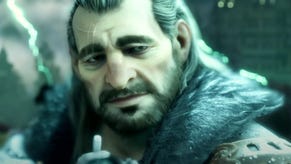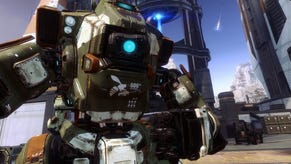Face-Off: Dragon Age II
A sense of scale.
Xbox 360's adherence to v-sync provides increased visual consistency but the price for this is that when performance drops, the sustained 20FPS we get really stands out - and not in a good way. Mass Effect 2 players will be very familiar with the effect, and it occurs in Dragon Age II for the same reason: the game code is waiting for the next screen refresh to begin before it displays the frame, effectively stalling the GPU.
BioWare was clearly caught between a rock and a hard place here. With Mass Effect 2 the studio experimented with unlocked frame-rate and disengaged v-sync, as we saw in the PS3 demo, but decided against it for the final shipping game. In Dragon Age II, the reverse situation has occurred - v-sync on both platforms in the demo, then disabling it on PS3, presumably because the performance hit was simply too high.
Let's see how this decision plays out as we travel around a number of different environments.
Exploration is a key element in Dragon Age II, and while the same differences remain in the way the screen is refreshed, the effect is far less pronounced - for the most part both games offer a locked 30FPS update, and once again, only challenging scenes with many NPCs in the area incur either a frame-rate drop on 360, or the introduction of really noticeable screen-tear on the PlayStation 3.
Now let's take a look at the third and final aspect of the game, combat. Here, the engine is under far greater load as multiple enemies and a multitude of magical effects are being added to the base load of the environments and the player's team.
For the most part we see that both consoles operate at 30 frames per second during combat, but when the load really kicks in, once again we see PS3 operating with a smoother frame-rate, albeit with some pretty hefty tearing. As is the case with a double-buffered v-sync set-up, the 360 soldiers on at a sustained 20 frames per second in similar situations. Thankfully, Dragon Age II is a game that doesn't really rely upon ultra-swift refresh or fast response from the controls, so neither implementation really impacts the gameplay experience that badly, but on balance, I'd take the screen-tear - this isn't a fast-moving game, so its impact on visual quality isn't anywhere as bad as the graphs might suggest.
What seems to have been a last-minute tweak appears to have paid off for BioWare, but the utilisation of an uncapped frame-rate can result in some quite bizarre scenarios: cinematics can suddenly shift all the way up to 60FPS, before returning to the usual 30 at the next cut. Certain sections of some environments (such as your home in Lowtown) can also see frame-rate accelerate suddenly to close to 60FPS. It doesn't happen so often but it's quite jarring when it does, and a frame-rate cap would've helped with a more general feeling of stability.
Of course, Dragon Age II is also available on PC, offering users the ability to power past the technological limitations of the consoles, while enjoying more visual effects and higher detail artwork (if you download the free high resolution texture pack). The standard mouse and keyboard interface should also provide a more precise, easy-to-use control interface (though combat really does feel as though it was tailored for the joypad).
Let's take a look at how Dragon Age II looks on PC up against the PlayStation 3 game. In addition to the basic head-to-head comparison, it's an interesting exercise because it also allows us to compare the MLAA implementation up against the 8x multi-sampling anti-aliasing available on the PC version at max settings. In addition to maxed out AA, we also have the high quality texture pack enabled, 16x anisotropic filtering and graphical settings are set to "High" in DirectX 11 mode. If you'd prefer to see the Xbox 360 version up against the PC game, we've got that covered as well.
The vid establishes that the MLAA on PS3 is really, really impressive and for the most part it's a match for the PC's top-end anti-aliasing solution. The other major improvement we see on PC is with the higher-detail artwork; however, the striking thing there is that the most impactful differences are on the environments as opposed to the characters. Dragon Age II's cut-scenes concentrate on the characters very closely, so even with the higher quality textures in place, you still see a lot of glaringly low detail art.








